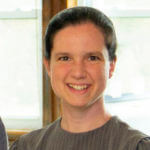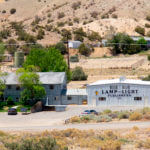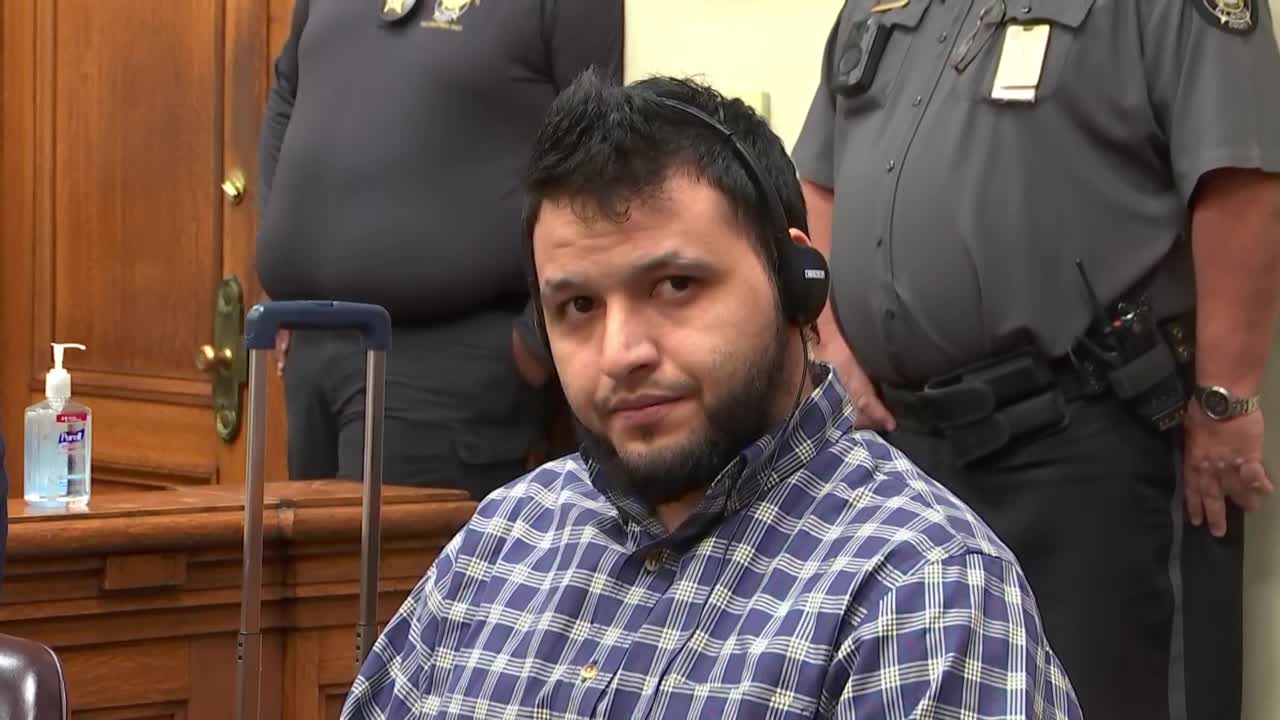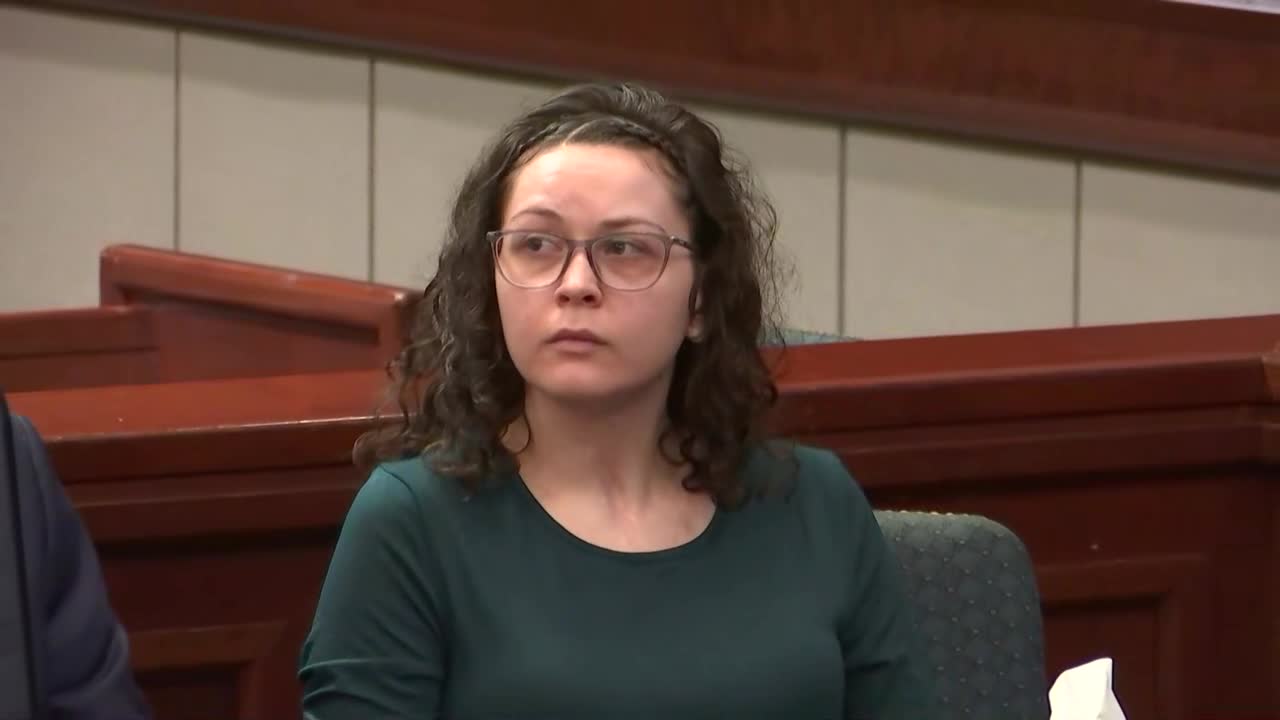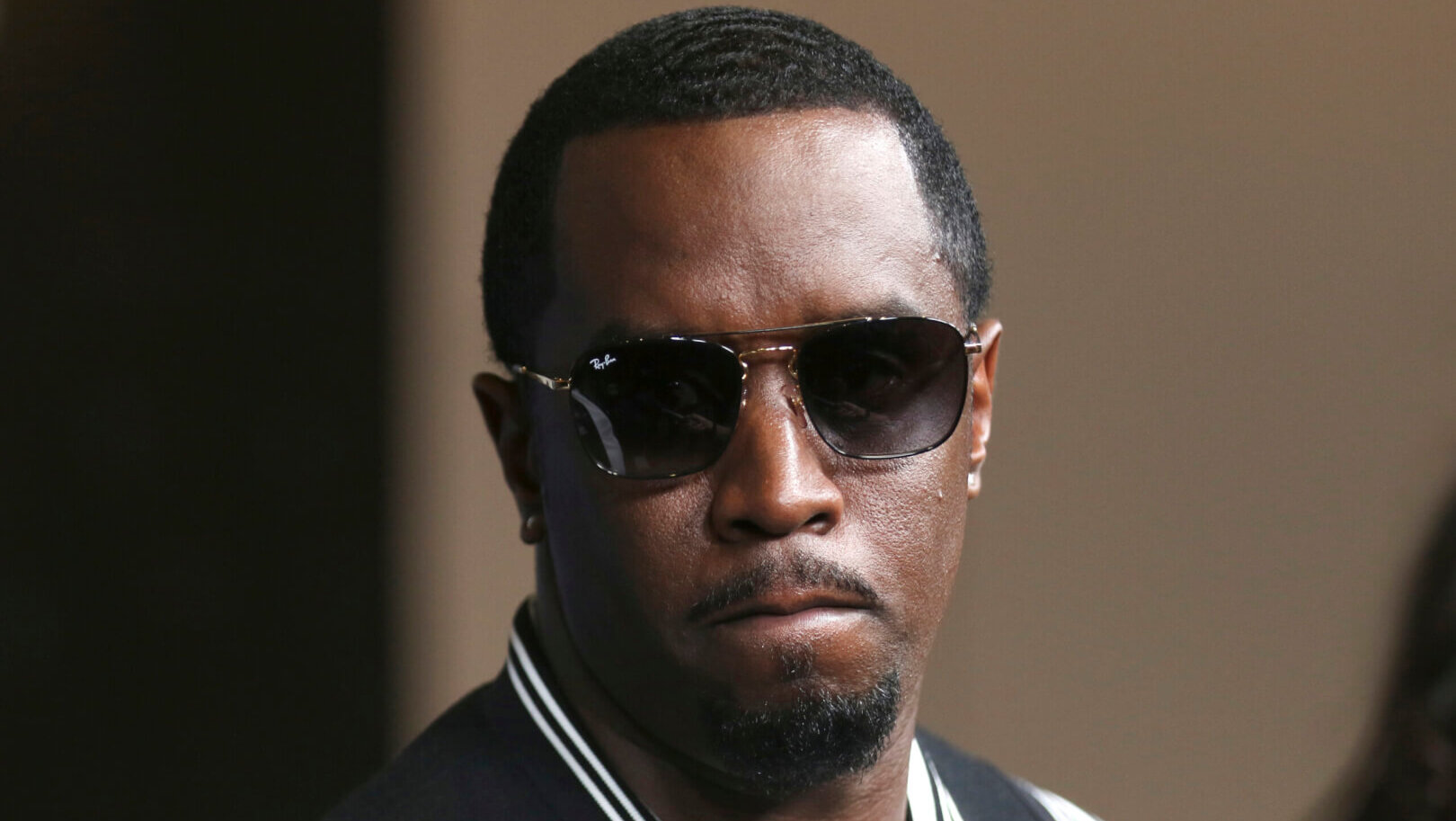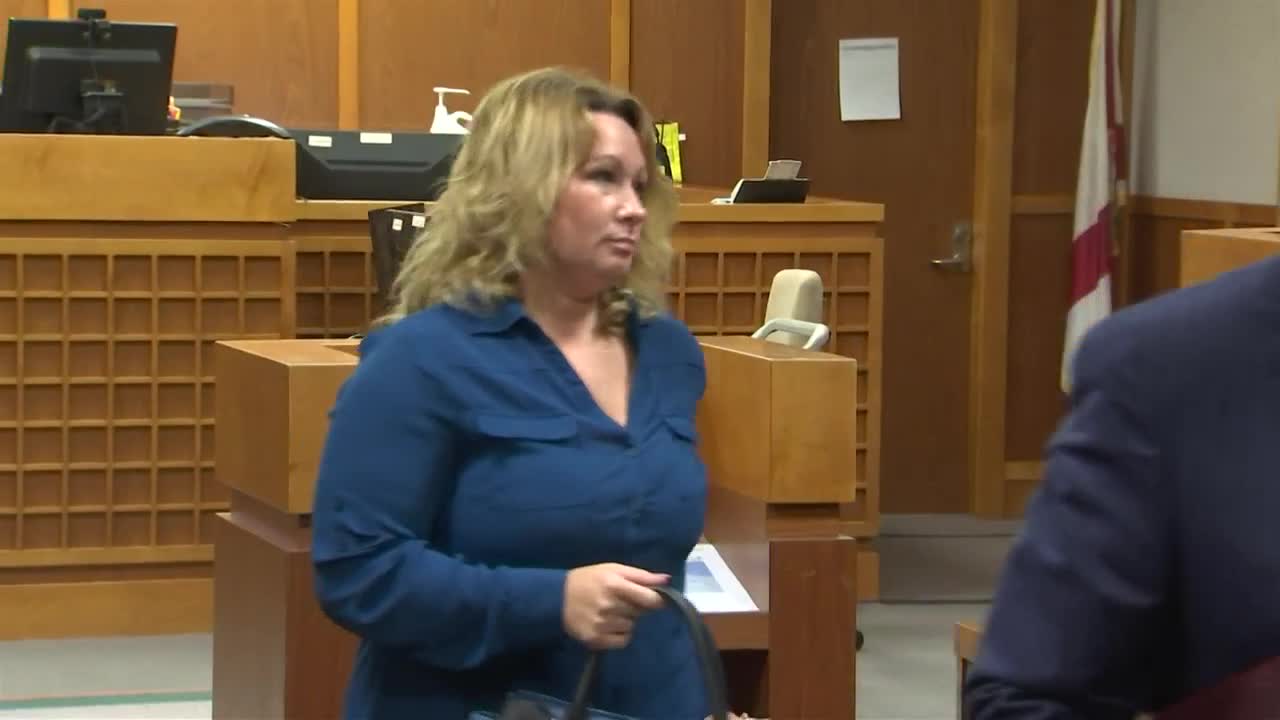By FELICIA FONSECA Associated Press
FLAGSTAFF, Ariz. (AP) — Jurors hearing the case against U.S. Air Force airman Mark Gooch heard lengthy testimony Friday from a cellphone data expert who mapped the route that Gooch allegedly drove the day a Mennonite woman was kidnapped from northwestern New Mexico.
Sasha Krause, who worked at a publishing ministry in the Mennonite community, was found more than a month later with a gunshot wound to the head in a forest clearing outside Flagstaff, Arizona. Gooch, 22, faces life in prison if convicted of first-degree murder and other charges in her death.
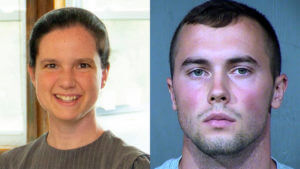
FILE – (L) Sasha Krause (Erica Sauder via AP), (R) Mark Gooch (Maricopa County Sheriff’s Office)
No DNA evidence, eyewitnesses or fingerprints tie Gooch to the crime.
The prosecutor is asking the jury to look at various puzzle pieces that, when assembled, show Gooch traveled from Luke Air Force Base, where he was stationed in metropolitan Phoenix, to the Mennonite community in Farmington, New Mexico, where Krause was gathering materials for Sunday school when she disappeared.
Testimony from Sev Dishman, a cellphone expert and retired Army sergeant major, took up much of the day Friday. He led jurors through an extensive presentation that explained types of cellphone data, concentration of cell sites and degree of accuracy for location data.
Dishman acknowledged on cross-examination from Gooch’s attorney, Bruce Griffen, that none of the evidence directly places Gooch at the church compound or in the forest, nor does it explain what happened at either location.
The data puts Gooch’s cellphone within a half-mile of the church and 1.3 miles (2.1 kilometers) from where Krause’s body was found based on the phone’s communication with cell sites, Dishman said. Gooch’s phone also was the only device that communicated with the same sites as Krause’s phone before her signal dropped off west of Farmington, Dishman said.
The data created a path from the air base early on Jan. 18 past Flagstaff’s snow-capped mountains and through the Navajo reservation, where receipts showed Gooch stopped for food and then for gas in Farmington. Two photos taken on Gooch’s phone showed spots along Interstate 17 between Phoenix and Flagstaff.
Gooch’s cellphone records indicated his phone was around the Mennonite church for a couple of hours before returning on the same route, but with a detour in the forest outside Flagstaff after midnight. Surveillance video at the base showed his car returned at about 7 a.m. the day after he left.
Dishman explained gaps in the cellphone data by the lack of cell sites on the vast Navajo Nation and near Sunset Crater Volcano National Monument where a camper discovered Krause’s body. Location data would be more accurate, he said, if a cellphone user had GPS on.
Any location data produced by AT&T, which relies on assisted GPS, has to be corroborated, Dishman said. Both Krause and Gooch had AT&T service, he said.
Records showed the Google location history from Gooch’s phone had been deleted. Gooch had asked his brother, Samuel, to remotely wipe his phone and SD cards, cancel automatic payments and drain an account, according to a recorded jail conversation between them and testimony from Samuel Gooch earlier this week.
Jurors are expected to hear the entire conversation between Mark Gooch and Coconino County Sheriff’s Detective Lauren Nagele, who questioned him at the air base in April 2020, sometime next week. In the interview, Gooch acknowledged traveling to Farmington when Krause was reported missing.
He said he had time for a long drive, wanted to stop at a ski resort outside Flagstaff and then decided to check out a Mennonite church service near Farmington since he already was hours into the weekend trip and craved the fellowship. He denied kidnapping or killing Krause.
Gooch said he thought he returned to the air base around 2 a.m. the next day, according to the interview. No one else had access to his phone that day, he said, according to sheriff’s records.
There’s no indication Gooch and Krause knew each other. Gooch grew up in a Mennonite community in Wisconsin but never officially joined the church. Krause, 27, taught school in Texas, where her parents still live, before moving to New Mexico.
The trial continues Tuesday.








